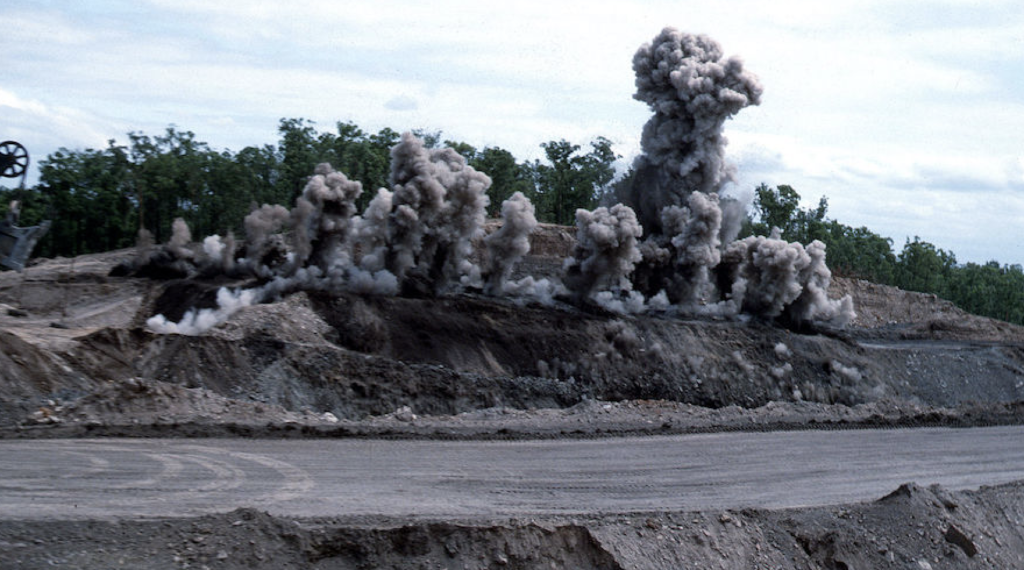Staff Writer | March 23, 2023

Blasting in an open-pit mine. (Reference image by CSIRO, Wikimedia Commons).
Researchers at the Los Alamos National Laboratory have come up with a way to create “switchable” high explosives that won’t detonate unless activated by being filled with an inert fluid, such as water.

The goal behind their efforts is to mitigate accidental detonations of stored explosives.
In a paper published in the journal Physical Review Letters, the researchers explain that for military planners, personnel who work with explosives and communities near operations such as mining and munitions, the volatility of certain high explosives presents a potential hazard. Impact, heat and friction are all sensitivities that can produce an unplanned explosion.
As an example, they mention the accidental detonation of stored ammonium nitrate in Beirut, Lebanon, in 2020 killed more than 200 people. Equivalent to an earthquake, the explosion levelled the port district and was felt across the country and the region. While unusually large, the event was not unprecedented; one estimate showed that 500 unplanned explosions occurred at munitions plants from 1979 to 2013.
The Los Alamos team used additive manufacturing techniques to fabricate high-explosive charges with a lattice structure that by itself cannot sustain detonation.
In experimentation that marked the first time quantifying the effectiveness of the high-explosive charges, the team found that an unfilled charge’s Gurney energy—the propulsion resulting from an explosive’s gaseous products expanding—was 98% lower than that of an equivalent water-filled charge. This means that the unfilled high-explosive charges can be safely transported, handled and stored without risk of detonation.
Their experiments also led them to tune the detonative performance of the system by changing the mechanical properties of the fluids in fluid-filled charges. The team found that replacing water with higher-density fluids increased propulsion by up to 8.5% and decreased detonation velocity by 13.4%. The results point to the technology’s possible tenability for a variety of industrial purposes.
“The data suggest a tuneability allowing to optimize the energy delivery for different applications,” said Cameron Brown, a scientist at Los Alamos and lead author on the paper. “Insight into the Gurney energy and detonation velocity of filled and unfilled charges presents a path forward for quantifying the detonative performance of switchable explosives with different structural parameters, and optimizing them for mining, oil and gas exploration, blasting or military applications.”
Further experimentation and data will help evaluate performance with different charge structures and fill fluids.
The improved technology, though, offers a path for improving industrial safety and even for making safe things like unexploded ordinance, which in many places can be a hazard for civilians during or after conflicts.
No comments:
Post a Comment